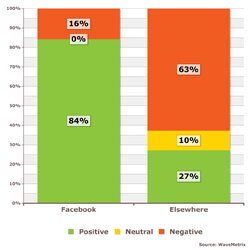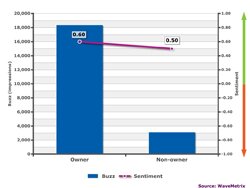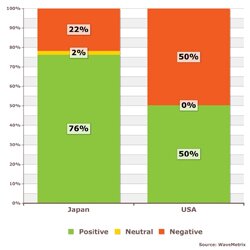By Andy Pilkington, WaveMetrix,
We’re all familiar with particular examples of great social media campaigns, but many of us are still in the dark as to what makes these campaigns so successful. To address this problem, WaveMetrix have just released their latest quarterly summary, which details exactly what made Q3 campaigns successful, or not so successful.
The latest Social Media Quarterly from WaveMetrix attempts to pinpoint exactly what made social media campaigns successful or effective during Q3. By taking a look into some of the most interesting campaigns during the last few months, the report concludes that successful Q3 campaigns hinged around the following factors
• Relevance – successful campaigns were always relevant both to what the brand wanted to achieve and to the consumers it tried to reach
• Loyalty – good campaigns leveraged existing loyalty bases to build engagement in their target market
• Targeting – effective social media content often reached out to specific target audiences, even on mainstream sites
• Cultural consideration – brands who failed to take into account cultural norms tended to achieve unexpected reactions, whereas those who properly considered foreign markets tended to resonate with consumers more effectively
• Timely response – brands who averted potential crises responded in a timely and appropriate manner to social media problems and issues
Relevance to the brand and to its consumers
A brand’s social media activity should always be relevant to both the brand itself and its consumers. Successful social media campaigns in Q3 employed a message that resonated with their target consumer and created a campaign that built upon specific brand strengths and targets.
For some brands, like Cadbury and Diesel, this meant high profile creatives worked well. Others framed their campaign more simply, with brands like Domino’s employing a lower profile social media strategy to simply promote offers and promotions.
 Leveraging consumer loyalty: a risky business
Leveraging consumer loyalty: a risky business
A loyal consumer base can be invaluable when launching a new social media campaign. However, using this base can be a risky business as overestimating consumer allegiance can backfire. Brands need to be sure they need to be sure they have true loyalty before attempting to leverage it.
Vitaminwater successfully allowed their large Facebook fan base to defend the brand when it came under fire, but when Pepsi invited consumers to say whether they preferred Pepsi Max or Coke Zero, most consumers sided with Coke.
 Targeted content: reaching the niche groups on mainstream sites
Targeted content: reaching the niche groups on mainstream sites
With the growing size of social media, attempting to target every consumer can mean you end up with less of an audience, rather than more. When picking a target audience, it’s important to think about the strategic needs of a brand and who it needs to reach.
During Q3, Under Armour, a traditionally male-orientated brand, reached out successfully to women via an empowering online creative. Conversely, while consumers on the Mercedes Facebook page were very positive towards new product launches, almost all were already Mercedes owners, rather than potential new customers.
 Different cultures, different impact
Different cultures, different impact
There is rarely a successful one-size-fits-all social media campaign. Different cultures and audiences receive the same content in different ways, so it’s vital to consider each target market in turn and structure social media campaigns appropriately.
Nissan’s campaign for the Leaf electric car received very different responses in Japan and the US. While US consumers criticised the car’s mileage range, Japanese consumers focused on design and style. While Nissan may have underestimated the cultural differences, Ben & Jerry’s showed cultural awareness by maintaining their French presence with a dedicated French Facebook page, separated from the main US page.
In times of crisis, appropriate timely action is key
Whilst social media crises are relatively rare, it’s imperative that brands treat them seriously and respond in an appropriate and timely manner.
When Dr Pepper mistakenly directed a 14 year old girl to a pornographic film, their delay in response led to an escalation of the crisis and more than 1,000 posts on Mumsnet. Their eventual response of free theatre tickets only attracted more outrage because it was seen as inappropriate and inconsiderate. In contrast, Kraft’s timely response and explanation caused negative discussion to stagnate as consumers began to focus on Kraft’s “excellent” response.
See below for the full summary deck, or you can investigate some of the specific campaign case studies on our website.



